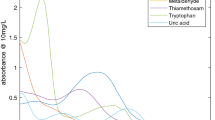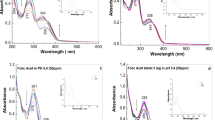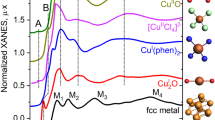Abstract
IN 1941 caspersson, Landström-Hyden and Aquilonius1 demonstrated that the chromidial substance contained in the pancreatic exocrine cells and in other serous secreting elements had a typical absorption spectrum in the ultra-violet region with a peak in 2600 A. As this substance showed a negative Feulgen reaction, they concluded that it is a nucleoprotein with a high content of nucleotides of ribonucleic type. In the apical part of the cell containing the granules, they found absorption curves of a protein type, but with a concentration much lower than in the basal zone ; they explain this difference as due to the dilution of the secretion.
This is a preview of subscription content, access via your institution
Access options
Subscribe to this journal
Receive 51 print issues and online access
$199.00 per year
only $3.90 per issue
Buy this article
- Purchase on Springer Link
- Instant access to full article PDF
Prices may be subject to local taxes which are calculated during checkout
Similar content being viewed by others
References
Caspersson, T., Landström, H., and Aquilonius, L., Chromosome, 2, 111 (1941).
Gersh, I., and Baker, R. F., J. Cell. Comp. Phys., 21, 213 (1943).
De Robertis, E., Nuñez, I., and Del Conte, E., Rev. Soc. Arg. Biol., in the press.
Kunitz, M., J. Gen. Phys., 24, 15 (1940).
Bensley, S. H., Anat. Rec, 72, 131 (1938).
Author information
Authors and Affiliations
Rights and permissions
About this article
Cite this article
DE ROBERTIS, E. Absorption Spectra of the Exocrine Cells of the Pancreas. Nature 157, 264–265 (1946). https://doi.org/10.1038/157264b0
Issue Date:
DOI: https://doi.org/10.1038/157264b0
Comments
By submitting a comment you agree to abide by our Terms and Community Guidelines. If you find something abusive or that does not comply with our terms or guidelines please flag it as inappropriate.



